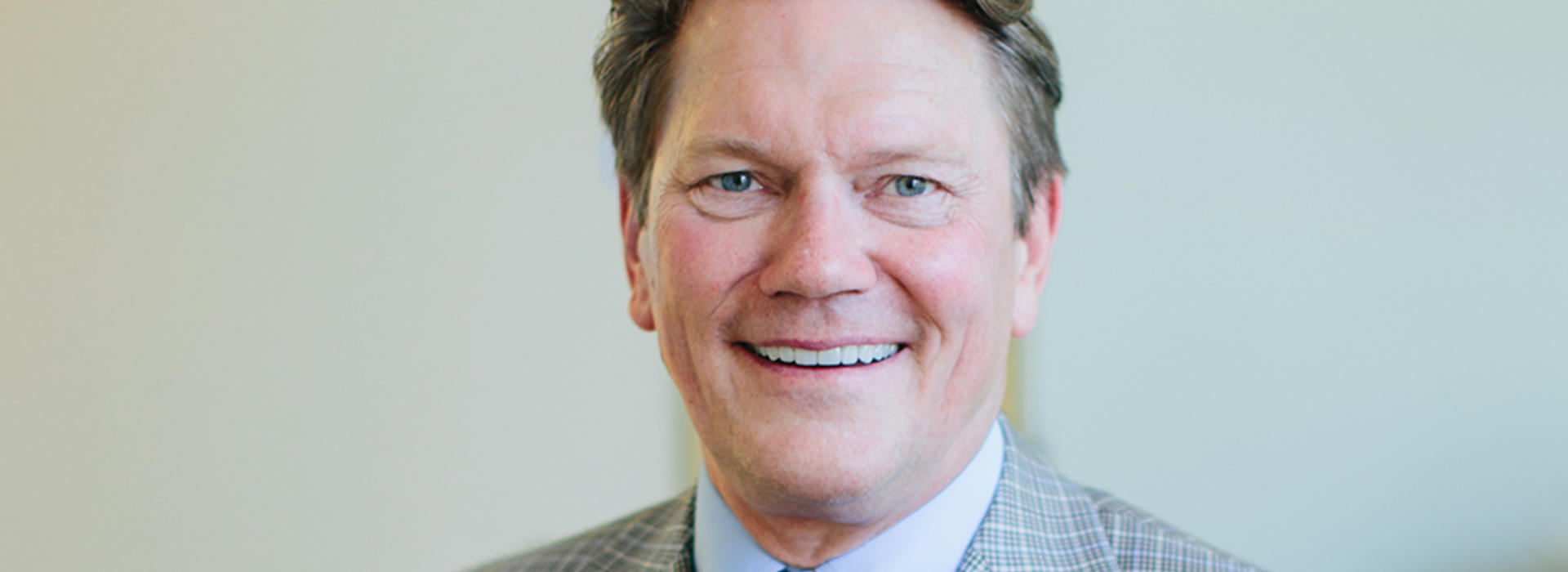
Curiosity, Creativity and Compassion Compel Dr. Mark Dahl to Develop Innovations that Improve Lives
While there are many classic orthopedic subspecialty areas, like hand surgery or joint replacement, Mark Dahl, MD, professor in the Department of Orthopedic Surgery at the University of Minnesota Medical School, has been a pioneer in the emerging subspecialty of limb lengthening and deformity correction, which is improving the quality of life for patients with conditions that are highly unique. There are about 100 orthopedic surgeons in North America with training in limb lengthening and deformity correction, and only a handful treat both children and adults like Dr. Dahl.
“As the only surgeon in the upper Midwest who has concentrated their career on this subspecialty area, people think of me as a problem-solver for bad fractures, non-unions and limb length discrepancies,” Dr. Dahl said. “As a result, I create ways to improve the treatment of very complex, orphaned conditions.”
Dr. Dahl has been a co-inventor on five patents aimed at improving the treatment of these orphaned conditions, which are rare and often overlooked as too complex to solve. However, advances in care spearheaded by Dr. Dahl and his contemporaries have resulted in substantial improvements in patient care.
“Dr. Dahl has consistently embraced new technology throughout his career,” said Andrew Georgiadis, MD, his colleague and partner at Gillette Children’s Specialty Healthcare in St. Paul, MN. “His focus has always been on improving existing procedures and devices, expanding their indications to help different patient populations or – if that fails – developing new technologies to meet his patient’s needs.”
For example, patients with bone cancer (sarcoma) often undergo limb salvage surgery to remove the cancerous bone without amputating the impacted limb. Once the cancer is removed, however, the remaining bone is more vulnerable to fracture or injury. The typical treatment is to fill the hole with donor bone (an allograft) and fix it with a plate, however, there’s often trouble getting that bone to heal, and it’s vulnerable.
Dr. Dahl believed there must be a better way and began researching the topic. He learned about famed physician Gavriil Abramovich Ilizarov, MD, through a paper published in Cuba, which described the “Ilizarov method” to lengthen bone. From there, Dr. Dahl went to Russia to train under Dr. Ilizarov, learning a technique known as “bone transport,” which allows patients with a bone defect to regrow the missing bone.
“I stabilize the defect with a circular external fixator and then cut the bone at a healthy location,” Dr. Dahl said. “We can then slowly shift the segment of healthy bone through the defect, leaving a trail of bone formation behind it.”
While commonly used for trauma, bone loss from infection or other damage, bone transport is rarely used for tumors. Over the course of his career, Dr. Dahl has done about a dozen cases for patients with sarcomas.
"Bone transport procedures often take months, and reconstructing a limb for a final result can take years,” said Stewart Morrison, MBBS, a past fellow who trained under Dr. Dahl. “The process takes not only extreme technical diligence, but also empathy with patients who go on the journey. Dr. Dahl's ability to engage and understand his patients enhances his success in this domain."
When performing a bone transport in the past, patients had to wear an external metal fixator while the healthy bone was slowly moved through the defect, a process that would take about a year. The pins and wires attached to the bone and external fixator would cut through the patient’s skin, leaving scarring, causing infection and inflicting a lot of pain and suffering.
“I thought the method was very hard on patients,” Dr. Dahl said.
Dr. Dahl and a panel of surgeons collaborated with NuVasive Specialized Orthopedics, a division of NuVasive focused on the design and innovation of disruptive orthopedic technologies, to create an intramedullary rod for bone transport with no external fixators. The Precice Bone Transport system is the first of its kind and received U.S. Food and Drug Administration (FDA) clearance in 2019. This treatment option allows patients to have an internal telescopic rod with a single screw attached to the healthy bone segment implanted. With this innovative design, it allows the bone segment to move through the defect with no external hardware and a potential decrease in postoperative scarring or pain.
“When the healthy bone finally docks at the end of the defect, we use the device to compress the bone together, causing it to heal,” Dr. Dahl said. “Over many months the bone hardens, but instead of having a fixator on, the device is inside your body. It’s not nearly as painful, and there’s not as much scarring.”
Dr. Dahl believes these new innovations will change orthopedic trauma surgery, in addition to how physicians treat bones that have trouble healing.
“It’s the wave of the future, and we’re right at the beginning of it,” he said.
Over the course of his 45-year career, Dr. Dahl has done around 6,000 lengthenings and 100 bone transports, a rarely performed type of lengthening, and is always thinking of ways to creatively improve the process.
“It’s a combination of curiosity, creativity and compassion,” Dr. Dahl said. “I’m endlessly curious and want to know how things work and don’t work, and I desperately want to help people who have problems that are typically unsolvable. Part of my curiosity emerges as creativity. I’m always thinking about how it could be better, and don’t accept the status quo.”